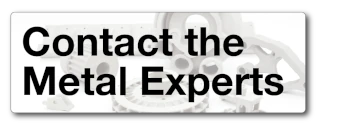
The Role of Metal Injection Molding in Achieving Lightweight Parts
Are you seeking better, smarter, and more efficient ways to engineer your metal components? Imagine creating components with the same strength and durability you’ve come to expect – but significantly lighter.
Spoiler: That’s possible with Metal Injection Molding (MIM) lightweighting.
Improved fuel efficiency in automotive and aerospace applications, enhanced portability in consumer electronics, and reduced transportation costs across the board – sounds amazing, right?
Here, we walk you through the basics of lightweighting in MIM, including design considerations, possible challenges, and everything in between.
Whether you’re in the automotive industry striving to meet emission standards, a consumer electronics company aiming to enhance user experience, or simply a manufacturer looking for cost and energy efficiency, MIM lightweighting could be your ticket to the next level.
What is Lightweighting?
Simply put, lightweighting is the process of reducing the weight of a component, without compromising its performance, strength, or durability.
Lightweighting is widely used in numerous industries, including automotive, aerospace, and consumer electronics, where manufacturers look to optimize performance, reduce energy consumption, and minimize environmental impact.
Metal Injection Molding & Lightweight Parts
Incorporating lightweighting principles into the MIM process leads to a wide range of advantages, including:
- Reduced environmental impact/sustainability
- Greater material options
- Optimized performance
- Increased fuel efficiency
- Improved user experience
Sustainability
By optimizing the use of materials through lightweighting, MIM can achieve significant material savings. This leads not only to reduced manufacturing costs but also to a smaller environmental footprint.
Using generative design and topology optimization, a minimal amount of material is required to produce near-optimal parts, aligning with the growing emphasis on sustainability in manufacturing.
Greater Material Options
Lightweighting through MIM broadens the range of materials you can use to manufacture your components. For example, techniques such as latticing can modify the bulk mechanical properties of materials, leading to a lower part mass. This flexibility allows you to leverage materials with desirable properties that may not have been feasible before.
Optimized Performance
The performance of components can also be enhanced through strategic lightweighting. Lattice structures not only reduce weight but can also be designed to improve and adjust impact absorption behavior. This demonstrates how lightweighting can enhance both functional and performance aspects of components across numerous industries. 
Increased Fuel Efficiency
Lightweighting is beneficial in the automotive and aerospace sectors, where reduced component weight can enhance fuel efficiency. A small reduction in weight can lead to a significant increase in fuel efficiency in automotive manufacturing. Similarly, aerospace manufacturers can achieve significant energy savings with the strength-to-weight ratio of parts playing a critical role.
Improved User Experience
Lightweighting can also lead to an improved user experience. In the consumer electronics industry, for instance, lighter devices lead to greater portability and convenience for users. This is also true with handheld power tools and portable medical devices.
Lightweighting Techniques in Metal Injection Molding
When designing a metal injection molded part, there are many ways to incorporate lightweighting. Here’s an overview of some common lightweighting techniques to keep in mind:
Material Selection
Certain materials have a high strength-to-weight ratio, making them ideal for lightweight applications. For example, Titanium offers exceptional strength and corrosion resistance, making it suitable for aerospace and medical applications. Meanwhile, stainless steel is popular due to its durability, corrosion resistance, and cost-effectiveness, making it a go-to choice for automotive and consumer electronic industries.
Design Optimization
Through the use of computer-aided design (CAD) software and simulation tools, engineers can optimize designs to minimize material use, while maintaining required strength and performance.
Topology optimization and generative design are methods used to optimize material distribution within a defined space, producing designs that efficiently use material only where needed. The result is lightweight parts with complex geometries.
Creating Porous Structures
Advancements in MIM techniques allow for the intentional creation of porous parts. Controlled porosity can be used to reduce part weight while maintaining a high degree of strength. Porous structures can also provide additional benefits, such as improved heat dissipation or the ability to absorb fluids, depending on the application.
Challenges & Solutions in MIM Lightweighting
 While metal injection molding lightweighting presents considerable opportunities for innovation and cost savings – it’s not without its challenges. Common challenges include:
While metal injection molding lightweighting presents considerable opportunities for innovation and cost savings – it’s not without its challenges. Common challenges include:
- Maintaining strength and durability
- Initial costs
- Integration of MIM processes into workflows
- Quality control
Maintaining Strength & Durability
When lightweighting with MIM, one of the most prominent issues lies in maintaining the strength and durability of the components.
Reducing the weight of a component can compromise its structural integrity, making it more susceptible to damage or failure under stress. However, innovative design techniques such as lattice structures or topology optimization can help overcome this hurdle, allowing for strategic placement of material only where needed, ensuring strength is preserved even when weight is reduced.
Initial Costs
The initial setup and tooling costs of metal injection molding can be quite significant, which may deter some manufacturers. It’s essential to consider the long-term savings that are achievable through reduced material usage and improved energy efficiency. Over time, the cost-per-unit decreases, making MIM a viable option, especially for high-volume production.
Integration of MIM Processes into Workflows
Another challenge is the difficulty of integrating MIM lightweighting into existing manufacturing workflows. This change requires a shift in processes and thinking, which may be met with resistance. Fostering a culture of innovation and continuous improvement can help mitigate this. Training and development programs can also help equip teams with the necessary skills to effectively use MIM technology.
Quality Control
Lastly, there’s a challenge in testing and quality control. How can you guarantee the performance and reliability of these lighter components? Rigorous testing protocols and advanced analytical techniques can assure the quality and performance of MIM produced parts.
Embracing the Future with MIM Lightweighting
It’s clear that MIM lightweighting is redefining the standards of manufacturing and setting the stage for a more sustainable and efficient future.
While the road to mastering MIM lightweighting may have its hurdles, the rewards are undeniably transformative. A dedicated and knowledgeable metal injection molding manufacturer can help you overcome these hurdles, so you can focus on what’s most important - quality and innovation.
Embrace the change, rise to the challenges, and get ready to transform the future of your projects with MIM lightweighting!
Have questions about MIM? Reach out to one of our experts!

